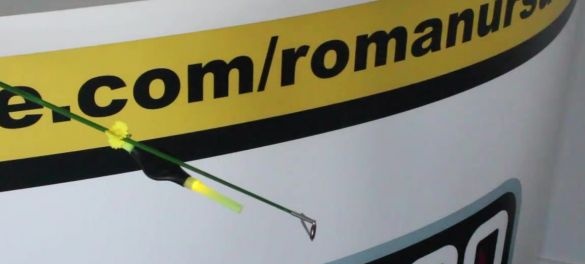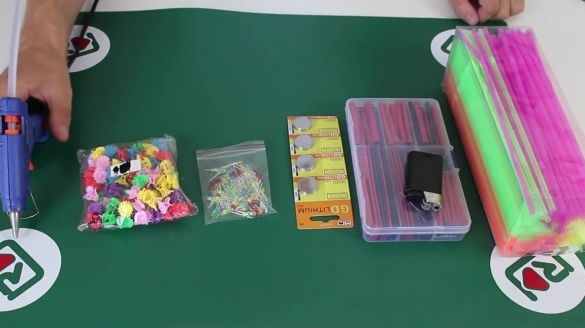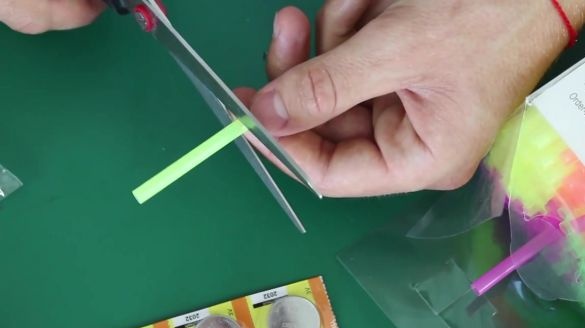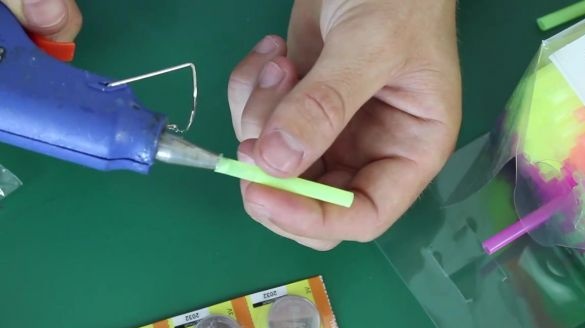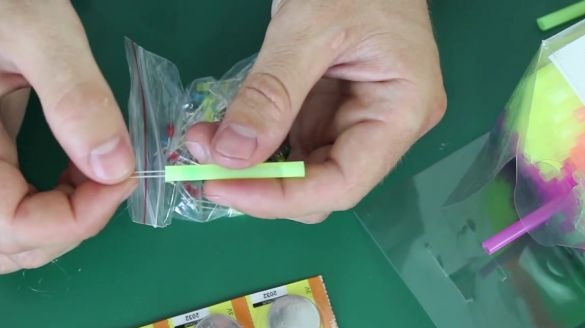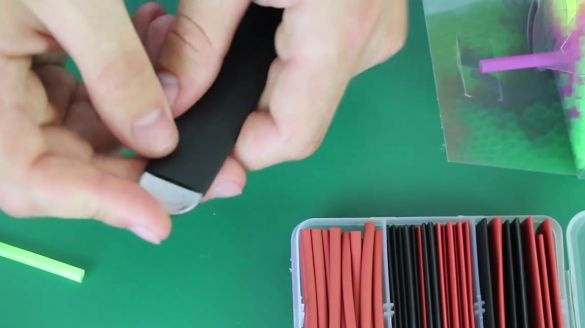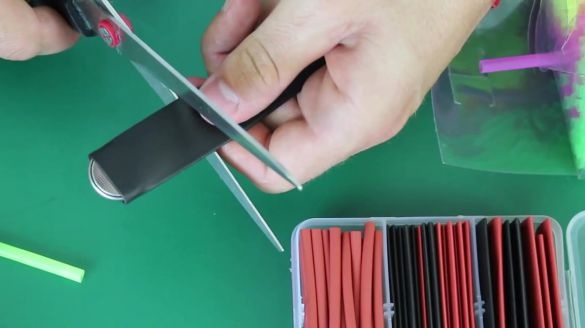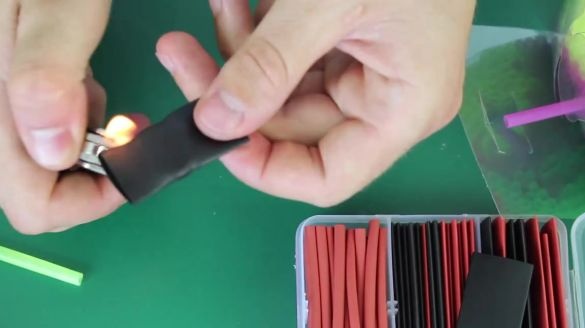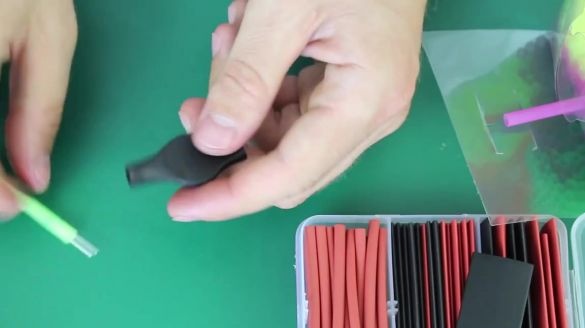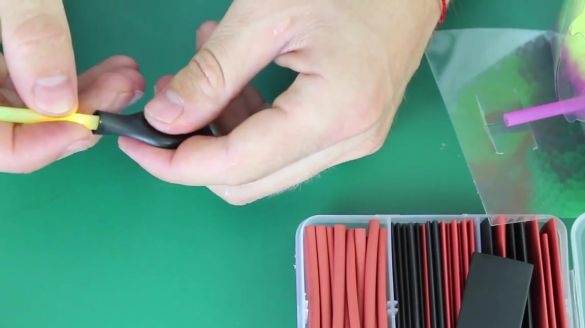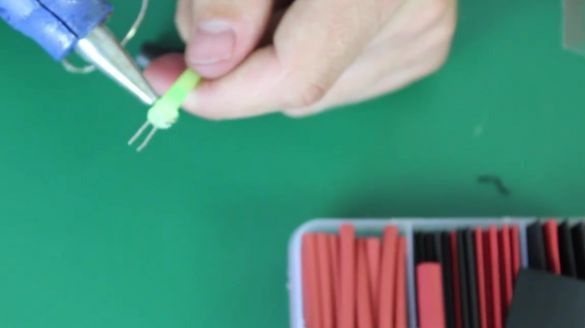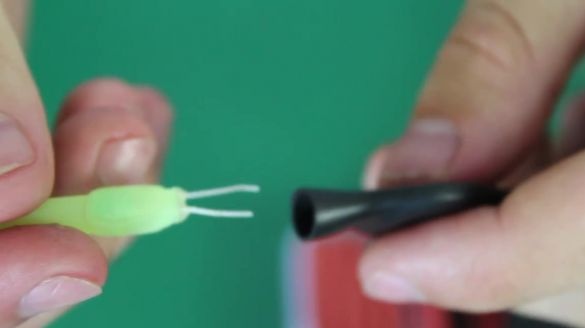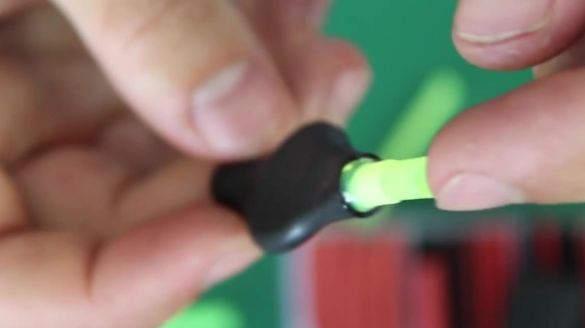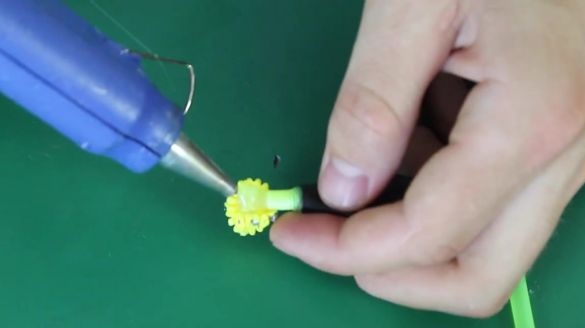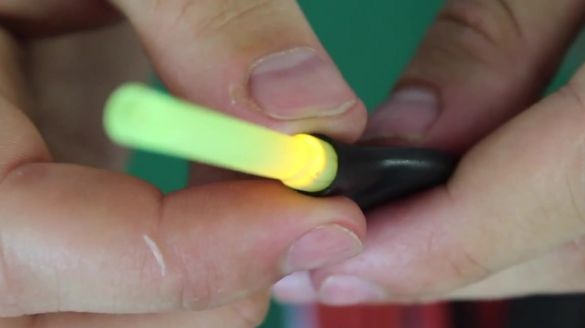Fishing enthusiasts often go fishing for an overnight stay. In this case, you have to look for fireflies, but it is not always possible to find. We offer you a simple but effective way to independently produce fireflies for feeder fishing.
We advise you to start by watching the author’s videoroller
[media = https: //www.youtube.com/watch? v = 3d8ll3Ogrcg]
So we need:
- glue gun;
- children hairpins;
- LEDs;
- 3 volt batteries;
- lighter;
- heat shrink;
- tubules for juice.
First of all, select one tube and cut a piece about 3-4 cm long.
Next, take hot glue and fill it with a cut piece of tubule.
We take the LED and insert it into the tube with glue so that the legs of the bulb peek out about half a centimeter. Put aside and wait until the glue has cooled.
Next, we take one battery and shrink tube. Note that the handset must be selected according to the size of the battery. Insert the battery into the heat shrink and cut off about 2 cm.
We insert the battery deeper so that it is in the middle. Next, lightly heat the shrink with a lighter so as to obtain a workpiece like the one shown in the figure below.
We insert the tube with the LED into the heat shrink so that the contacts are on the contacts of the battery.
Now we warm the heat shrink well so that it fits snugly to the tube with the LED. According to the author of the idea, while heating shrink, it is necessary to periodically reel the tube with the LED so that it does not stick.
If the shrinkage is no longer narrowing, as in the case of the author, you can go the opposite way and increase the diameter of the tube with an LED. This can be done with hot glue. It is important that all contacts remaining in the heat shrink are as tight as possible.
At the free end, just glue a small segment of the tube. The firefly can be adjusted if the corrugated part of the tube is used at this stage.
At the end, glue a hairpin on this piece of tubule.
Electronic bite alarm is ready. In order to use it, you just need to insert the tube with the LED into the appropriate place and the light will turn on. Next, with the help of a crocodile, we hook the signaling device to the tip of the fishing rod, fix it in any convenient position and wait for the signal.

